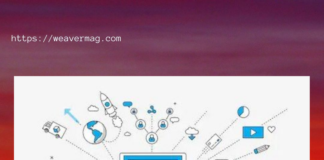In the midst of the Israel-Hamas war, the role of the cyber domain has emerged as a crucial and unexpected player in the conflict. This article delves into the intricate web of state-sponsored cyber activities, dissecting the actors, their tactics, and the broader implications on the digital battlefield.
I. The Social Media Disinformation Quagmire
The conflict’s initiation on October 7th triggered a surge in disinformation on social media platforms. Despite the attacks from Hamas, major social media platforms struggled to curb the spread of misinformation. This section explores the challenges faced by these platforms and the persistent abuse of disinformation as a tool to manipulate public perception.
II. State-Sponsored Threat Actors: APTs in Focus
Beyond the chaos on social media, the article emphasizes the looming threat of targeted attacks originating from state-sponsored actors. The focus is on Advanced Persistent Threats (APTs) associated with Hamas, Hezbollah, and Iran, shedding light on the potential real-world consequences of their cyber endeavors.
Hamas-Aligned Clusters
Arid Viper: Unmasking Espionage
- Aliases: APT-C-23, Grey Karkadann, Desert Falcon, Mantis
- Description: Arid Viper, suspected to operate on behalf of Hamas, engages in cyber espionage and information theft. Targeting high-profile individuals, their sophisticated tactics involve social engineering, phishing attacks, and innovative malware development practices.
Gaza Cybergang: Intelligence Collection Prowess
- Aliases: Molerats, TA402, Gaza Hackers Team, Moonlight
- Description: Active since 2012, Gaza Cybergang exhibits a medium to high level of confidence in Hamas affiliation. Known for intelligence collection and espionage, the group deploys a variety of custom tools, showcasing adaptability in the face of evolving tensions.
Hezbollah-Aligned Clusters
Plaid Rain: Targeting Israel Across Verticals
- Aliases: Aqua Dev 1, Polonium
- Description: Documented in 2022, Plaid Rain focuses on entities in Israel, showing potential coordination with Iran-nexus actors. The group utilizes vulnerability exploitation and a diverse set of custom tooling, exemplified by the Creepy malware toolset.
Lebanese Cedar: The Lesser-Reported APT
- Aliases: Volatile Cedar, DeftTorero
- Description: Lebanese Cedar, associated with Hezbollah, employs web server compromises for initial access. With a history of successful intrusions across multiple countries, the group maintains limited industry attention but poses a persistent threat through its espionage objectives.
Relevant Iranian Clusters
ShroudedSnooper: MOIS Affiliation
- Aliases: Storm-0861, Scarred Manticore
- Description: Operating for intelligence collection, ShroudedSnooper, attributed to Iran’s Ministry of Intelligence and Security (MOIS), intrudes across the Middle East. Their methods include compromising web servers and utilizing backdoors mimicking enterprise security software.
Cobalt Sapling: Proxy Groups and Hacktivist Personas
- Aliases: Moses Staff, Abraham’s Ax, Marigold Sandstorm
- Description: Cobalt Sapling comprises hacktivist personas, Moses Staff and Abraham’s Ax, aligned with Hezbollah. Focusing on anti-Israel rhetoric, disruptive attacks, and data exfiltration, these groups serve as proxy entities, providing plausible deniability to Iran.
III. Iranian Cyber Threat Landscape
The article broadens its scope to encompass the diverse array of Iranian state-sponsored threat actors, acknowledging their variability in size, capability, and motivation. Emphasizing the need for caution in attributing offensive actions, the Iranian clusters present a multifaceted component of the global threat landscape.
ShroudedSnooper: MOIS Intelligence Collection
- Aliases: Storm-0861, Scarred Manticore
- Description: With recent intrusions across the Middle East, ShroudedSnooper operates for intelligence collection under the banner of Iran’s Ministry of Intelligence and Security (MOIS). Their methods involve compromising web servers and employing backdoors for covert access.
Cobalt Sapling: Proxy Groups with Geopolitical Agenda
- Aliases: Moses Staff, Abraham’s Ax, Marigold Sandstorm
- Description: Operating under hacktivist personas, Moses Staff and Abraham’s Ax, Cobalt Sapling serves as a proxy with anti-Israel rhetoric. Sharing iconography and infrastructure management practices, these groups align their activities with Iran’s geopolitical interests.
IV. Navigating the Evolving Middle Eastern Cyber Landscape
The digital battlefield in the Middle East is undergoing rapid evolution, marked by the Israel-Hamas conflict’s infusion into the cyber domain. As the landscape transforms, it becomes imperative to navigate the complexities and nuances inherent in the region’s cyber activities. This section delves deeper into the key elements that define the evolving Middle Eastern cyber landscape.
A. Shifting Tactics in Social Media Disinformation
The war’s initiation on October 7th unleashed a wave of disinformation on social media platforms, turning them into battlegrounds of narratives. While social media was expected to be a source of information, it instead became a breeding ground for misinformation, fueled by inaccurate OSINT investigators and opportunistic-hacktivism. The persistence of disinformation highlights the failure of leading social media platforms to stem the tide. Understanding these shifting tactics is crucial, as disinformation continues to be a potent tool for shaping public perception.
B. State-Sponsored Threat Actors: APTs on the Horizon
Beyond the chaos on social media, state-sponsored Advanced Persistent Threats (APTs) have emerged as formidable players in the cyber domain. The article outlines specific threat actors aligned with Hamas, Hezbollah, and Iran, each with unique tactics, techniques, and procedures (TTPs). These APTs not only engage in traditional cyber espionage but also blur the lines with hacktivist personas, complicating the attribution landscape. The need for continuous monitoring and adaptation to their evolving strategies is paramount.
C. Iranian Cyber Threat Landscape: Diversity and Adaptability
The Iranian cyber threat landscape, with its diverse array of state-sponsored actors, adds another layer of complexity. Ranging in size, capability, and motivation, Iranian threat actors present a multifaceted challenge. The article underscores the variability among these actors and the caution required in attributing their offensive actions. The concept of hacktivist collectives serving as proxies to obscure state sponsorship introduces an additional layer of intrigue, emphasizing the need for nuanced analysis.
D. Proxy Groups and Geopolitical Agendas
Within this evolving landscape, the role of proxy groups cannot be understated. Cobalt Sapling, embodied by hacktivist personas like Moses Staff and Abraham’s Ax, serves as a prime example. These groups align their activities with the geopolitical interests of Iran, adding a layer of plausible deniability to the Iranian government. The intricate interplay between proxy groups and state-sponsored actors further complicates the attribution puzzle, demanding a comprehensive understanding of their motivations and methods.
E. Intelligence Collection and the MOIS Connection
The involvement of Iran’s Ministry of Intelligence and Security (MOIS) in cyber activities, exemplified by ShroudedSnooper, introduces a strategic dimension. The group’s focus on intelligence collection across the Middle East, including Israel, underscores the interconnected nature of cyber operations and geopolitical objectives. Compromising web servers and utilizing sophisticated backdoors, MOIS-affiliated groups exemplify the evolving capabilities of state-sponsored cyber actors.
F. Proactive Defense Posture and Industry Collaboration
In navigating this evolving landscape, the importance of a proactive defense posture cannot be overstated. Organizations, both within and outside the Middle East, must continually adapt their cybersecurity strategies to the changing threat landscape. Collaboration within the industry, as highlighted in the article, becomes crucial. The sharing of intelligence and insights is instrumental in collectively bolstering defenses and understanding the evolving tactics of state-sponsored threat actors.
V. Conclusion: A Call for Strategic Vigilance
As the Middle Eastern cyber landscape continues to evolve, characterized by a convergence of geopolitical tensions and digital warfare, strategic vigilance becomes the need of the hour. Navigating the complexities of social media disinformation, state-sponsored APTs, and the diverse Iranian cyber threat landscape demands a comprehensive and collaborative approach. The article serves as a call to action, urging stakeholders to stay abreast of the evolving dynamics and work collectively to fortify the digital defenses that underpin our interconnected world.









